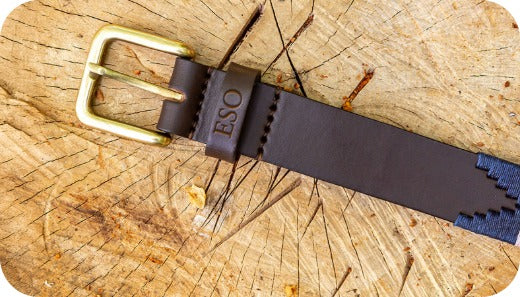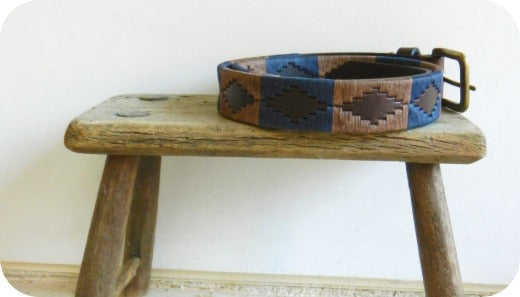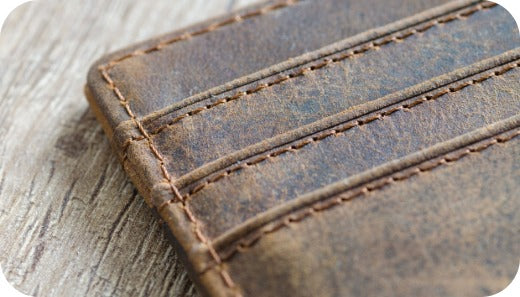I en tid dominert av umiddelbar tilfredsstillelse og forbrukerisme som bare går til spille, fremstår slow fashion som en mektig motkultur. Men hva er egentlig slow fashion, og hvorfor burde det bety noe for deg?
Hva er slow fashion?
Slow fashion er en bevegelse som oppmuntrer til en mer bærekraftig og etisk tilnærming til produksjon og forbruk av mote og personlige varer. Den fremmer klær av høy kvalitet som er slitesterke, rettferdige lønninger for arbeidere, miljøvennlige materialer og et bevisst forbruk. Den utfordrer bruk-og-kast-kulturen som hurtigmote har normalisert.
I stedet for å oppdatere garderoben din med noen få ukers mellomrom med billigproduserte, trendy plagg, oppmuntrer slow fashion til investering i vellagde plagg og tilbehør som er designet for å brukes, bæres og elskes i årevis.
For å forstå viktigheten av slow fashion, må vi undersøke skadene som hurtigmote forårsaker. Disse skadene kommer fra:
-
Overproduksjon: Data har vist at noen ledende hurtigmotemerker lanserer over 50 mikrosesongkolleksjoner årlig, noe som gir næring til en ustanselig forbrukssyklus. For å oppmuntre til masseoverforbruk er disse produktene billig priset. Å oppnå lave priser går imidlertid ofte på bekostning av kvalitet, ettersom hurtig- og ultrahurtige motemerker ofrer tiden og håndverket som vellagde plagg krever. Dette resulterer i klær som slites ut raskt, noe som får forbrukerne til å kjøpe mer og dermed viderefører syklusen på nytt.
-
Utnyttelse: Mange plagg lages i lavinntektsland under utrygge arbeidsforhold, der arbeidere tjener så lite som 2–3 dollar per dag. Arbeidere i disse regionene bærer byrden av å produsere billige engangsklær i et halsbrekkende tempo. Rana Plaza-kollapsen i Bangladesh i 2013, som drepte over 1100 klesarbeidere, avslørte de menneskelige kostnadene ved hurtigmote.
-
Avfall: Omtrent 21 % av moteproduktene forblir usolgt . I tillegg genereres det anslagsvis 92 millioner tonn tekstilavfall hvert år globalt. Det tilsvarer en søppelbil full av klær som dumpes hvert sekund. En stor andel av dette skyldes hurtigmote- og ultrahurtigmotemerker som produserer og lagerfører billige og slitesterke produkter.
Hvordan tilbyr slow fashion en løsning?
Slow fashion tar tak i disse problemene ved å prioritere:
1. Profitt gjennom kvalitet snarere enn kvantitet
I motsetning til hurtigmote, som er avhengig av å selge millioner av billigproduserte varer til lave priser for å generere profitt, tar langsom mote en annen vei. Den fokuserer på færre produkter av høyere kvalitet som selges til rettferdigere priser. Dette betyr at i stedet for at en kunde kjøper 10 dårlig produserte T-skjorter for 10 pund per stykk, kan de investere i 2 godt produserte for 50 pund per stykk. For kunder er det totale forbruket ofte det samme, men verdien og effekten er betydelig større.
Denne kvalitetsdrevne premiumprismodellen lar slow fashion-merker opprettholde lønnsomheten uten å utnytte arbeidere eller gå på kompromiss med kvaliteten. Fordi slow fashion-merker ikke er presset til å produsere i bulk til bunnpriser, har de råd til rettferdige lønninger, trygge arbeidsforhold og dyktig håndverk. Det er en forretningsmodell som prioriterer langsiktig verdi fremfor kortsiktig volum, noe som ikke bare gagner forbrukeren, men også menneskene og prosessene bak produktet.
2. Miljøvennlige materialer
Slow fashion-merker unngår syntetiske fibre som polyester, som skiller ut mikroplast og bruker opptil 200 år på å brytes ned. I stedet bruker de naturlige materialer som vegetabilsk garvet lær, bomull, hamp, lin og innovative materialer som Tencel. Og materialet er ikke begrenset til selve produktet, men også emballasjematerialet. Slow fashion-merker bruker ofte premium plastfri emballasje som bomullsposer eller slitesterke pappesker som er lett resirkulerbare.
For eksempel bruker pampeano 100 % plastfri emballasje for produktene sine og tilbyr kundene ideer om hvordan de kan gjenbruke emballasjeboksene som blomstervaser, pennestativ eller sminkekostholdere.

3. Holdbarhet og design
I stedet for å jage flyktige trender, prioriterer slow fashion tidløse design og slitesterke materialer og konstruksjoner. Pampeano tilbyr for eksempel et reparasjonsprogram som oppfordrer kundene til å reparere lærvarene sine i stedet for å kaste dem.
Praktiske måter å omfavne slow fashion på
Du trenger ikke å fornye garderoben din over natten for å gjøre en forskjell. Slik kan du begynne å integrere slow fashion i livsstilen din:
1. Kjøp mindre, velg bedre
For eksempel er en vellaget blazer ikke bare en basisvare i garderoben – den kan vare lenger enn fem trendy jakker som faller fra hverandre eller går av moten i løpet av et år. På samme måte kan det å investere i en slitesterk reiseveske i skinn spare deg for å måtte bytte ut et billig polyesteralternativ etter bare noen få bruksområder.
2. Undersøk merkene
Når du undersøker et merke, se utover slagordene deres. Velg merker som tilbyr reparasjonsprogrammer og plastfri emballasje. Merker som tar imot forhåndsbestillinger eller tilbyr produktpersonalisering indikerer ofte begrenset, gjennomtenkt produksjon snarere enn masseproduksjon. Et annet viktig tegn er deres markedsføringstilnærming – slow fashion-merker bruker minimal hype, og fokuserer i stedet på historiefortelling om håndverk, menneskene bak produktene og det dypere formålet, i stedet for å skape hastverk eller stole på FOMO-taktikker.

Bilde: Pampeanos premium 100 % plastfrie emballasje
4. Omfavn brukthandel
Plattformer som ThredUp, Depop, Vinted og Poshmark gjør det enklere enn noensinne å handle brukt. Du kan finne plagg av høy kvalitet til en brøkdel av prisen – samtidig som du reduserer avfall. Utover bærekraft kan brukthandel også være en fin måte å uttrykke stilen din på. Du har større sannsynlighet for å finne unike, enestående varer som skiller seg ut fra masseproduserte trender.
5. Lær grunnleggende reparasjoner
En mistet knapp eller en liten rift bør ikke bety slutten på et plagg. Å lære enkle syferdigheter bidrar til å forlenge levetiden til klærne dine og holder gjenstander unna søppelfyllinger.
6. Ta smartere vare
Å vaske klær eller ta vare på skinnvarene dine på riktig måte har stor innvirkning på deres levetid og miljøavtrykk. Mange plagg, spesielt jeans, gensere og jakker, trenger ikke å vaskes etter hver bruk. Overvasking falmer ikke bare farger og svekker fibrene, men forkorter også levetiden til klærne dine.
På samme måte kan det å ta vare på lærvarer som vesker og belter på riktig måte, og oppbevare dem unna direkte sollys og vann, beskytte dem mot skader.
7. Prøv å bytte klær og tilbehør
Organiser en klesbytte med venner eller lokalsamfunnet ditt. Det er en morsom og kostnadseffektiv måte å friske opp garderoben din på en bærekraftig måte.
Hvorfor slow fashion også er en kulturell bevegelse
Slow fashion inviterer til et kulturskifte: fra å se på klær som engangsvarer til å sette pris på dem som uttrykk for identitet, håndverk og kulturarv. Slow fashion-bevegelsen handler ikke bare om klær og tilbehør; det handler om å tenke nytt om vårt forhold til forbruk og vår livsstil generelt. Det er en tilbakevending til å verdsette kvalitet.
Ifølge en undersøkelse fra McKinsey & Company sier 67 % av forbrukerne at bærekraft er en nøkkelfaktor i kjøpsbeslutningene deres, spesielt blant Generasjon Z og millennials. Dette skiftet i tankesett oppmuntrer flere merkevarer til å revurdere praksisen sin og prioritere planeten fremfor profitt.
Fremveksten av digitale plattformer har gjort det mulig for lokalsamfunn å dele historiene bak klær, fremheve håndverkere og fremme reparasjonskultur. Bevegelser som #slowfashion og #wearslow oppfordrer forbrukere til å verdsette historier fremfor fart.
Avsluttende tanker: hvorfor slow fashion er viktigere nå enn noensinne
Vi er på et kritisk punkt i historien. Klimaendringer, miljøforringelse og sosial urettferdighet er ikke lenger fjerne trusler; de er presserende realiteter. De personlige eiendelene vi velger å kjøpe og bære hver dag kan enten bidra til problemet eller være en del av løsningen.
Å velge slow fashion er en liten, men kraftig motstandshandling. Så neste gang du blir fristet av en t-skjorte til 10 pund, ta en pause og spør: Hvem har laget denne? Hva er den laget av? Og hvor lenge vil den vare? Fordi mote aldri kan gå på bekostning av mennesker eller planeten.





